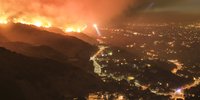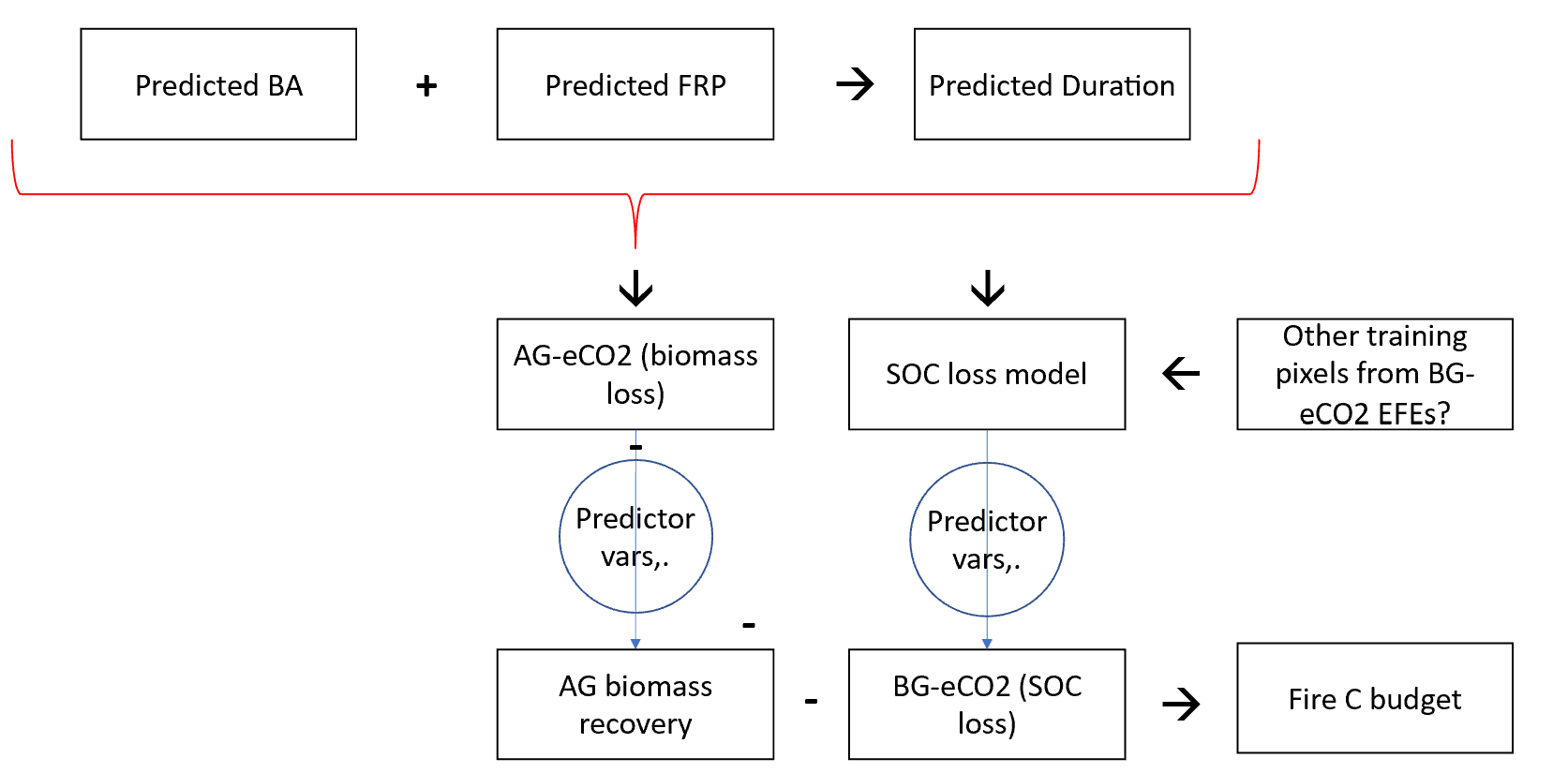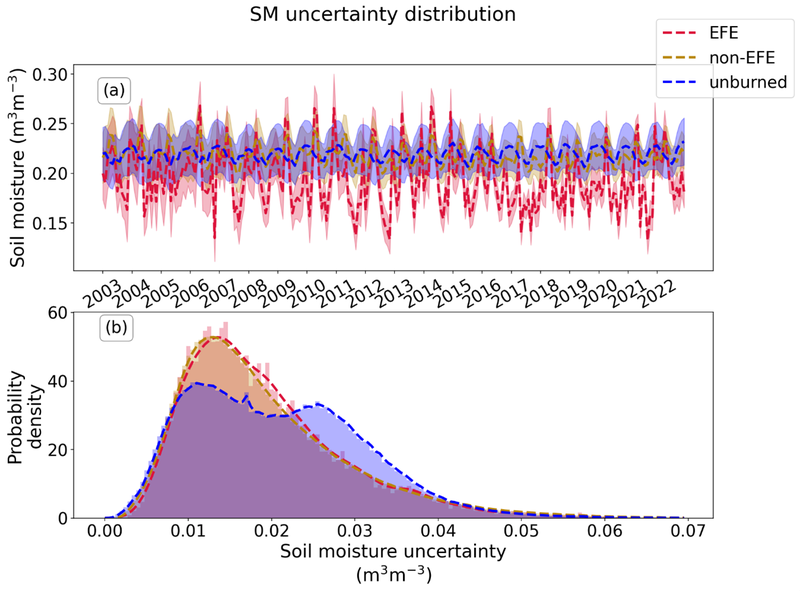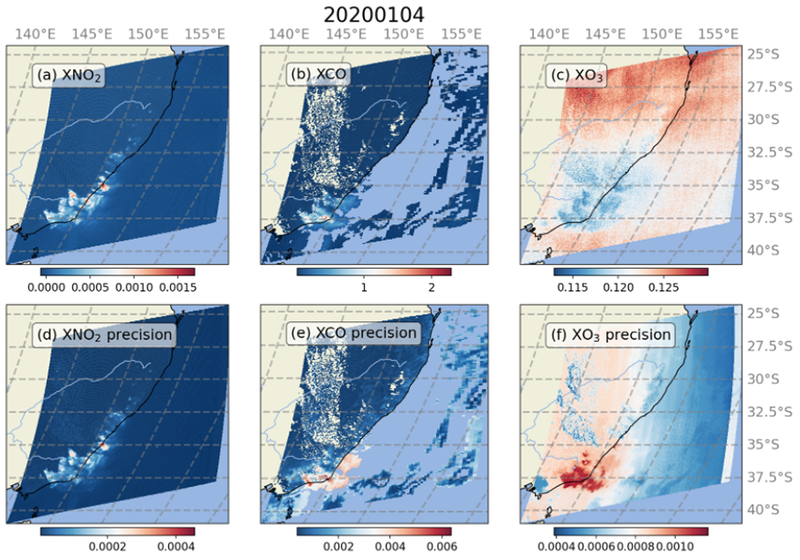Summary
Extreme fires are the most damaging in terms of their effects on climate and the wider environment, yet they remain ill defined. The XFires project aims to gain a holistic understanding of extreme fires and their impact in the Earth system. The project uses a broad selection of relevant climate data records of Essential Climate Variables that have been developed through the European Space Agency's Claimte Change Initiative to help define and differentiate extreme fires from ‘normal’ fires. The project will then determine the impact of extreme fires using case studies that will address the following questions:
- What variables would allow to give a broader and more global definition for an extreme fire?
- Have extreme fires increased in recent years? Where and why?
- Can they be predicted?
- What are impacts of extreme fires on the atmosphere and climate, vegetation, lakes, the cryosphere and on human health?
Background
Fire plays an important role in the Earth system, affecting atmospheric composition and climate, vegetation, soil and societal resources. It is usually seen as a threat, but it is one of the natural Earth system processes and can help rejuvenate ecosystems by leading to succession in different biomes. The balance between positive and negative effects therefore greatly depends on perspective (natural versus anthropogenic for example). The characteristics of fires play a key role; whether they are small or large, intense or calm, frequent or rare, etc. The concept of fire regimes is used to describe these characteristics and becomes even more relevant now that changes in fire regimes are increasingly observed. In regions where fires are becoming more intense or more frequent, for instance, the damages will tend to be higher. Extreme fires are particularly relevant, as they entail the most severe damages, both in terms of social and ecological values. According to the European Commission, within Europe “most damage caused by fires is due to extreme fire events, which only account for about 2% of the total number of fires”.
In addition to the intrinsic importance of extreme fires, their occurrence and impacts are closely linked to climate change, related to different climatic variables, such as soil and vegetation moisture content, biomass, temperature, etc. Fires impact the atmosphere and thus aerosol, greenhouse gases, and ozone concentrations, while the indirect effects of fire-related particles affect also water bodies and ice sheets.
The project first aims to use a cross-Essential Climate Variable (ECVs) approach to define and characterise extreme fires. We will use machine-learning approaches to model extreme fires, and to quantify the impact of extreme fires on the climate and wider environment. These advances will help inform IPCC, the Global Carbon Budget. In addition, Fire ECV has been selected by GCOS as a study case for climate adaptation policies.
Work breakdown structure
The XFires cross-ECV project is designed around five main Tasks.
Task 1 aims to identify and analyse the knowledge gaps on extreme wildfires, and improve the definition of and characterise extreme fires, thereby differentiating them from ‘normal’ fires. We will then explore the spatio-temporal dynamics in extreme fires over recent decades, to address a central question as to whether extreme fires have increased.
Task 2 assembles and pre-processes a range of data records of ECVs for further analyses. Specifically, we inventorise risk factors, intercompare fire-related ECVs with other datasets and build a community database for exploitation in subsequent Tasks.
Task 3 will use vegetation, climate, atmospheric, fire and land surface data from remote sensing to build machine learning (ML) models for predicting extreme fire burned area and fire radiative power. High-resolution stand-level forest data will be used to assess the combustion fraction, mortality and regrowth of fire-affected vegetation, providing the combustion completeness and hence aboveground carbon emissions rates. These huge improvements to observational constraints will be fed back into the ML model to provide predictive relationships between climate, vegetation, land use and burned area and fire intensity, from which further predictive relationships between these and aboveground biomass emissions can be concretely estimated. We will then use a combination of these outputs and remotely sensed CO data to provide improved constraints and estimates for soil smouldering and combustion emissions. By combining these we will leverage the state-of-the-art across this palette of technologies to provide a first realistic picture of total pre-fire conditions and post-fire impacts of extreme fires on the terrestrial carbon cycle.
Task 4 is dedicated to the characterisation of uncertainty across individual ECVs and error propagation to quantify:
- uncertainty across different burned area and emissions products; and
- uncertainty in the climate impact of extreme fires related to the temporal resolution of input emissions datasets, and scaling assumptions applied to emissions.
Task 5 investigates the impact of extreme fires on land vegetation and soils, and the carbon cycle applying our ML model. We will also generate new emissions associated with extreme fires, and contrast those with ‘normal’ fires for use as input into an Earth System Model, to quantify their impacts on atmospheric composition and climate. Finally, we explore the wider impact of extreme fires on human health, lakes, and via black carbon affecting melt-rates on the Greenland ice-sheet.
The XFires cross-ECV project will draw on existing ECV data products relevant to extreme fires and their impacts, that have been generated by dedicated ESA Climate Change Initiative projects and elsewhere (e.g. Fire CCI burnt area).
The project will build a community database, whereby all ECV data will be merged into an easy-to-use community database in a common 0.25-degree global grid in NetCDF format. We will generate new and improved emissions datasets for extreme and normal fires at sub-monthly and monthly resolution for study of uncertainties (e.g. revised global GFED).
All existing ECV data products developed through the ESA Climate Change Initiative are free and open access via climate.esa.int/data.
This section presents the documentation relating to project deliverables released to the public.
Here we present preliminary results relating to analysis of Extreme Fire Events (EFEs) versus non-extreme events in relation to GCOS-defined Essential Climate Variables (ECVs):
1. Soil Moisture (SM)
2. Uncertainty from the analysis of fire events
The XFires project is also studying the uncertainty of the data obtained from the analysis of fire events; in the example below, corresponding to gases emissions from extreme fire events.
The ESA XFires project team consists of leading scientists from 10 organisations across Europe. The project is managed by Lucrecia Pettinari of the Universidad de Alcalá (UAH) and the Science Lead is Professor Stephen Sitch (UNEXE)
Prime Contractor
- University of Exeter (UNEXE)
Core partners
- Universidad de Alcalá (UAH) - Core Partner
- Laboratoire des Sciences du Climat et de l’Environnement, Université de Versailles St Quentin en Yvelines (LSCE-UVSQ) - Core Partner
- Wageningen University, Department of Environmental Sciences (WUR-DES) - Core Partner
ECV Partners
- Université Catholique de Louvain (UCLouvain)
- University of Leicester (UoL)
- Technische Universitaet Wien (TU Wien)
- Royal Belgian Institute for Space Aeronomy (BIRA-IASB)
- National Research Council of Italy, Institute for Electromagnetic Sensing of the Environment (CNR-IREA)
- DTU Space, Technical University of Denmark (DTU).
- Science Leader: Prof. Stephen Sitch, University of Exeter
- Project manager: Dr. Lucrecia Pettinari, University of Alcalá
- ESA Technical Officer Dr. Clément Albergel, European Space Agency
Latest news & events

CCI colocation & CMUG integration meeting 2026
Annual gathering of the CCI community for ESA programme updates, scientific progress, and forward-looking discussions.
Mehr erfahren
Fire science and satellites in focus at ESA workshop
An international workshop explored how satellites and global collaboration can advance wildfire monitoring
Mehr erfahren
New Position: Junior Professional in AI for Climate Science
Opportunity for early-career Artificial Intelligence talent to join ESA’s Actionable Climate Information Section
Mehr erfahren
Working for ESA: procurement and proposal submission process
An Introduction to ESA Star - ESA's System for Tendering and Registration
Mehr erfahren
ESA at COP29
ESA is participating in COP29 to highlighting satellites' role in tackling climate change
Mehr erfahren




